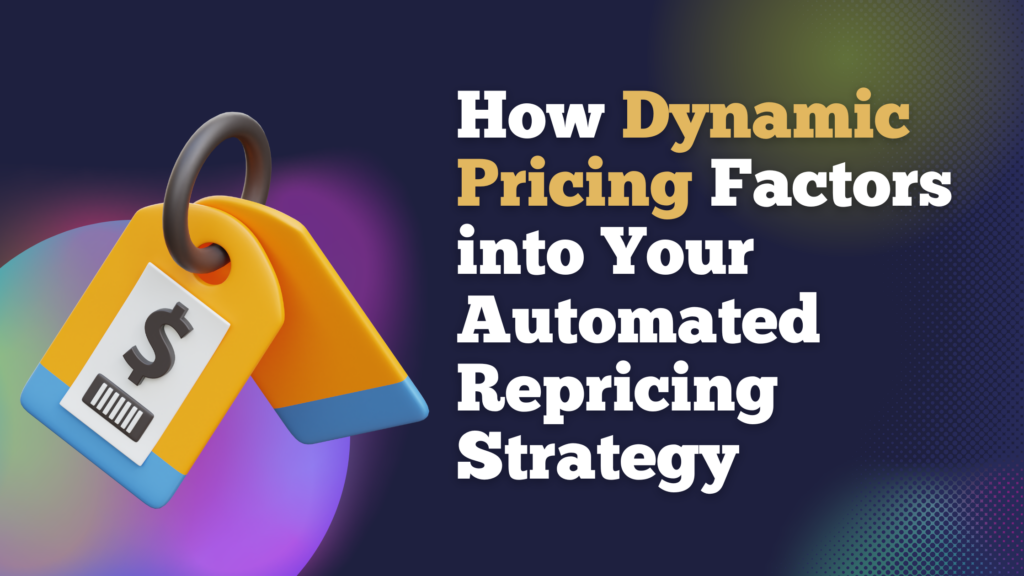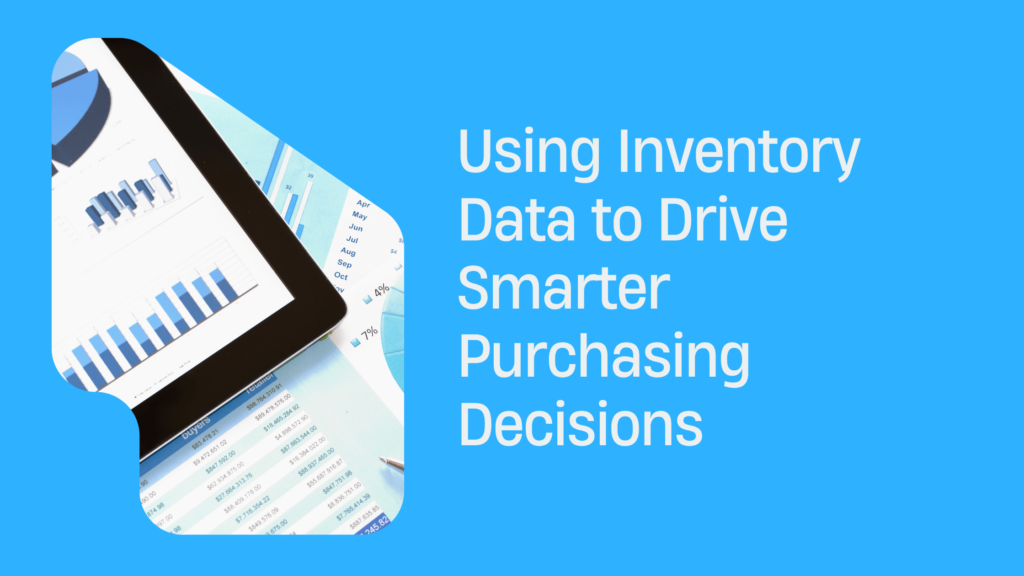How Dynamic Pricing Factors into Your Automated Repricing Strategy
As an ecommerce seller, you want to maximize your profits while staying competitive in the market. This is where dynamic pricing comes into play. A dynamic pricing strategy allows you to adjust your prices based on real-time market demands, giving you a competitive edge and the ability to adapt to changing market conditions.
In this blog, we will explore the concept of dynamic pricing and how it can be incorporated into an effective automated repricing strategy. We will look into key factors such as competitor pricing, inventory levels, and the time of year to help you understand the power of dynamic repricing and how it can revolutionize your business.
Understanding Dynamic Pricing
Dynamic pricing, also known as variable pricing or surge pricing, is a strategy that involves adjusting prices based on current market demands. This strategy allows you to capitalize on changes in supply and demand, ensuring that your prices are always optimized for maximum profit.
For example, a ride-sharing service may increase prices during peak travel times or a grocer may lower prices when produce is in season. By implementing dynamic pricing, you can stay competitive and flexible in the ever-changing online marketplace.
While dynamic pricing offers numerous benefits, it is important to note that it may not be suitable for every sector. Some industries, such as restaurants or those with fixed-rate shipping, may not be conducive to dynamic pricing. However, for businesses in the ecommerce realm, dynamic pricing automation has become an essential tool for maximizing profit and gaining a competitive edge.
The Benefits of Dynamic Pricing
Dynamic pricing has become increasingly popular in the ecommerce industry due to the numerous benefits it offers. Let’s take a closer look at some of these benefits:
Nimble Decision-Making – Dynamic pricing allows for agile decision-making by automating price adjustments based on real-time market conditions. Instead of manually entering price changes, dynamic pricing automation tools can adjust prices based on factors such as stock availability, changes in shipping, consumer demand, or product seasonality. This enables your team to save time and effort while ensuring that your prices are always optimized.
Maximized Profit Potential – One of the key advantages of dynamic pricing is its ability to maximize profit. Whether you are facing an overstock situation and need to reduce prices to entice sales or your product is in high demand during the holiday season, dynamic repricing adjusts automatically to bring in the most profit. By continuously monitoring market conditions and adjusting prices accordingly, you can ensure that you are always making the most of every sales opportunity.
Greater Industry Insight – Repricing strategies provide you with valuable industry insights by giving you a deeper understanding of competitor pricing and industry changes as they occur. By staying informed about market trends, you can make more informed decisions and stay one step ahead of your competitors. This insight allows you to identify emerging opportunities and adjust your pricing strategy accordingly.
Sustained Profitability – Dynamic pricing allows you to continue bringing in profit even during downtimes. In times of weak economy or inflation, products with fixed pricing may experience a decline in sales. However, dynamic pricing allows you to recoup sales by offering lowered thresholds and discounts. By adjusting prices to match market conditions, you can maintain a steady flow of revenue, even in challenging times.
Different Types of Dynamic Pricing
Dynamic pricing is not a one-size-fits-all strategy. There are various types of dynamic repricing strategies that can be implemented based on your business needs.
Time-Based Pricing – Time-based pricing accounts for changes in demand based on timing. This strategy is often used for limited-time offers, such as Black Friday discounts or rush hour ride-share surges. By adjusting prices based on specific timeframes, you can take advantage of peak demand and maximize your profits.
Segmented Pricing – Segmented pricing involves offering different prices to different segments of customers for the same products. This strategy allows you to tailor prices based on factors such as loyalty, membership, or customer value. For example, sporting event tickets may offer different prices based on the teams playing, their performance, and the number of fans they have. By segmenting your customers and offering personalized pricing, you can cater to their specific needs and maximize revenue.
Peak Pricing – Peak pricing focuses specifically on demand surges during certain hours, days, or seasons. This strategy involves adjusting product prices to reflect high-demand periods. Utility companies, for example, may charge peak prices during months or seasons when energy usage is at its highest. By implementing peak pricing, you can effectively manage demand and optimize your revenue.
Top Dynamic Pricing Strategies in Ecommerce
Now that we have explored the benefits and different types of dynamic pricing, let’s look into the top strategies that can be implemented in the ecommerce industry:
Use an Automated Repricer
Implementing an automated repricer is a highly effective way to incorporate dynamic pricing automation into your overall strategy. Automated repricing tools allow you to adjust your prices automatically, ensuring that they remain competitive and aligned with your goals. There are various options available based on your specific objectives:
Marketplace Repricer – A marketplace repricer utilizes algorithmic pricing technology to help you win the buy box or best offer position at the highest possible price. This strategy is ideal if your goal is to maximize your profits by winning more of the buy box.
Velocity Repricer – A velocity repricer automatically adjusts prices based on the goals you set. Whether you want to extract more margin on fast-selling products or lower prices when sales are slow, a velocity repricer can optimize your prices based on your specific objectives.
Constantly Monitor Competition
Effective repricing strategies require robust competitive data analytics. By continuously monitoring your competitors’ pricing strategies, you can gain valuable insights and adjust your prices accordingly. Visualization dashboards and benchmarking tools are essential for easily grasping competitive data at a glance.
Look for analytics tools that provide SKU- and ASIN-level insights, allowing you to compare your prices with your competitors in a straightforward and uncomplicated manner.
Look for Opportunities to Bundle
Bundling products into single-SKU offerings is not only a best practice for competitive pricing but also a great way to differentiate yourself from the competition. By grouping popular products into competitively-priced packages, you can inspire consumers to make larger purchases.
For example, offering a discounted three-pack of items can entice customers to stretch their wallets and increase their overall spending. Bundling not only increases your average order value but also allows you to stand out in a crowded marketplace.
Centralize Marketplace Management
Managing multiple accounts across different marketplaces can be a daunting task. Without a centralized view of your pricing strategy, you may encounter gaps in data, inconsistencies in pricing, and delays in problem diagnosis. By consolidating your multichannel efforts into a single, streamlined platform, you gain total visibility over your entire ecommerce program.
A centralized marketplace management solution allows you to easily monitor and adjust your prices across all marketplaces, ensuring consistency and maximizing your revenue potential.
Considerations and Implementation
While dynamic pricing offers numerous benefits, it is important to consider potential downsides. Price changes that discriminate or take unfair advantage of customers can result in substantial losses and damage to your brand reputation. It is crucial to implement dynamic pricing in a transparent and customer-friendly manner. Consider applying smaller price hikes or implementing dynamic pricing only on select products to set clear expectations for your customers.
Implementing dynamic pricing requires a combination of preparation and automation. With the right tools and expert guidance, you can build a competitive pricing strategy for each marketplace with minimal effort. Inventory Source offers solutions to help you set up and optimize dynamic pricing strategies. Their expertise and support can help you maximize your profits while ensuring a hassle-free pricing process. Inventory Source provides solutions tailored to help you implement and manage your dynamic repricing process efficiently, maximizing both profit and simplicity.
Conclusion
Dynamic pricing is a powerful tool that can revolutionize your automated repricing strategy. By adjusting prices based on real-time market demands, you can stay competitive, maximize your profit potential, and gain a deeper understanding of your industry. Implementing dynamic pricing requires careful consideration and the right tools, but the benefits are well worth the effort. With the right repricing strategies and tools like dynamic pricing automation, ecommerce sellers can thrive across a range of dynamic pricing marketplaces.





